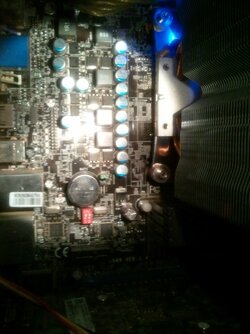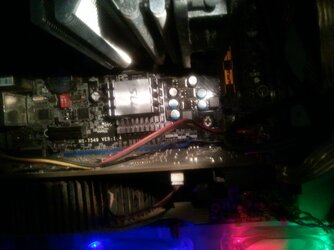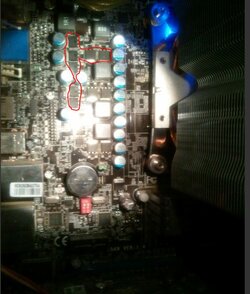- Joined
- Jul 31, 2012
- Location
- Phoenix Arizona
ok so ill start off by saying i just recently unlocked my amd phenom(tm) ii x2 555 to able to use my 2 extra cores, about a month ago, but then i seen my temps rise so i instantly switched back to dual core mode.. and waited for $$$
so i bought a nice heat sync and put it in 4 cores and surprisngly im lucky to have them for having a x2 555
heat sync is copper ( i dont see why the heatsync matters besides all the ovbious reasons) but i know its doing a good job for Air cooling.
i just want to slightly overclock my cpu to 3.5 or 3.6Ghz.
CPU Temp right now: 30C with about 1 and half core being used constantly (for my server) about 40-43C full load
CPU in Quad core x4 @ 3.2ghz
CPU in Wat: 176 (63-73Wat) in dual core and factory settings.
CPU Vcore right now: 1.46V
Windows 7 32bit
4gb of ram ( DDR 2 ) saddly the mother board lied about being DDR3 at the time of purchase.
amd phenom ii x2 x4 555 (unlocked to x4 b55)
motherboard MSI 7579 (mobo says) some say MSI mobos cant handle over 125 wat Cpus?
PSU um i honestly dont know i know it has to be 600Wat++ (doesnt show on PSU box)
GPU: HD radeon 6770
monitors: dual 22inchs
yes i do use HWMonitor for temp testing.
i do have prime95( forgot to mention these)
so i bought a nice heat sync and put it in 4 cores and surprisngly im lucky to have them for having a x2 555
heat sync is copper ( i dont see why the heatsync matters besides all the ovbious reasons) but i know its doing a good job for Air cooling.
i just want to slightly overclock my cpu to 3.5 or 3.6Ghz.
CPU Temp right now: 30C with about 1 and half core being used constantly (for my server) about 40-43C full load
CPU in Quad core x4 @ 3.2ghz
CPU in Wat: 176 (63-73Wat) in dual core and factory settings.
CPU Vcore right now: 1.46V
Windows 7 32bit
4gb of ram ( DDR 2 ) saddly the mother board lied about being DDR3 at the time of purchase.
amd phenom ii x2 x4 555 (unlocked to x4 b55)
motherboard MSI 7579 (mobo says) some say MSI mobos cant handle over 125 wat Cpus?
PSU um i honestly dont know i know it has to be 600Wat++ (doesnt show on PSU box)
GPU: HD radeon 6770
monitors: dual 22inchs
yes i do use HWMonitor for temp testing.
i do have prime95( forgot to mention these)
Last edited:



